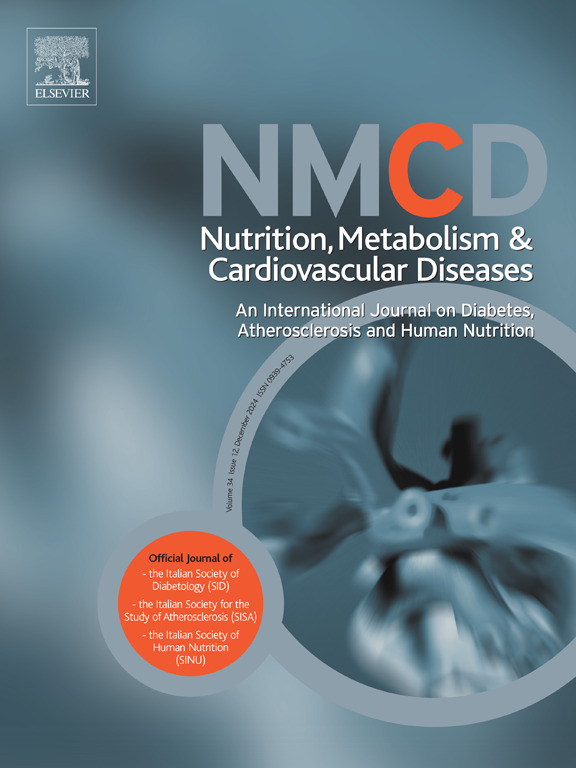Letter to the Editor: Elevated concurrent carotid atherosclerosis rates in patients with metabolic dysfunction-associated fatty liver disease (MAFLD) compared to non-alcoholic fatty liver disease (NAFLD): A cross-sectional observational study
IF 3.3
3区 医学
Q2 CARDIAC & CARDIOVASCULAR SYSTEMS
Nutrition Metabolism and Cardiovascular Diseases
Pub Date : 2025-03-08
DOI:10.1016/j.numecd.2025.103980
引用次数: 0
Abstract
Recent studies suggest that metabolic dysfunction-associated fatty liver disease (MAFLD) poses a greater cardiovascular risk than non-alcoholic fatty liver disease (NAFLD), particularly in relation to carotid atherosclerosis. This letter discusses findings from Chung et al., highlighting an increased prevalence of carotid atherosclerosis in MAFLD patients. However, methodological limitations such as retrospective design, single-center scope, and lack of data on confounding factors raise concerns about causality and generalizability. Emerging evidence supports MAFLD’s stronger predictive value for cardiovascular disease compared to NAFLD, with studies indicating a significantly higher incidence of subclinical atherosclerosis and cardiovascular mortality. The inclusion of metabolic risk factors in MAFLD criteria enhances its clinical relevance. Future research should adopt prospective, multi-center designs with comprehensive lifestyle and medication data to validate findings and refine screening protocols. Recognizing MAFLD’s distinct cardiovascular implications may improve early intervention strategies and patient outcomes.
致编辑的信与非酒精性脂肪肝(NAFLD)相比,代谢功能障碍相关性脂肪肝(MAFLD)患者并发颈动脉粥样硬化的比例升高:一项横断面观察研究。
最近的研究表明,代谢功能障碍相关的脂肪性肝病(MAFLD)比非酒精性脂肪性肝病(NAFLD)具有更大的心血管风险,特别是与颈动脉粥样硬化有关。这封信讨论了Chung等人的发现,强调了颈动脉粥样硬化在MAFLD患者中的患病率增加。然而,方法上的局限性,如回顾性设计、单中心范围和缺乏混杂因素的数据,引起了对因果关系和普遍性的担忧。新出现的证据支持与NAFLD相比,MAFLD对心血管疾病的预测价值更强,研究表明亚临床动脉粥样硬化和心血管死亡率明显更高。在MAFLD标准中纳入代谢危险因素增强了其临床相关性。未来的研究应采用前瞻性、多中心设计,综合生活方式和用药数据,以验证研究结果并完善筛查方案。认识到MAFLD独特的心血管影响可能会改善早期干预策略和患者预后。
本文章由计算机程序翻译,如有差异,请以英文原文为准。
求助全文
约1分钟内获得全文
求助全文
来源期刊
CiteScore
6.80
自引率
2.60%
发文量
332
审稿时长
57 days
期刊介绍:
Nutrition, Metabolism & Cardiovascular Diseases is a forum designed to focus on the powerful interplay between nutritional and metabolic alterations, and cardiovascular disorders. It aims to be a highly qualified tool to help refine strategies against the nutrition-related epidemics of metabolic and cardiovascular diseases. By presenting original clinical and experimental findings, it introduces readers and authors into a rapidly developing area of clinical and preventive medicine, including also vascular biology. Of particular concern are the origins, the mechanisms and the means to prevent and control diabetes, atherosclerosis, hypertension, and other nutrition-related diseases.

 求助内容:
求助内容: 应助结果提醒方式:
应助结果提醒方式:


